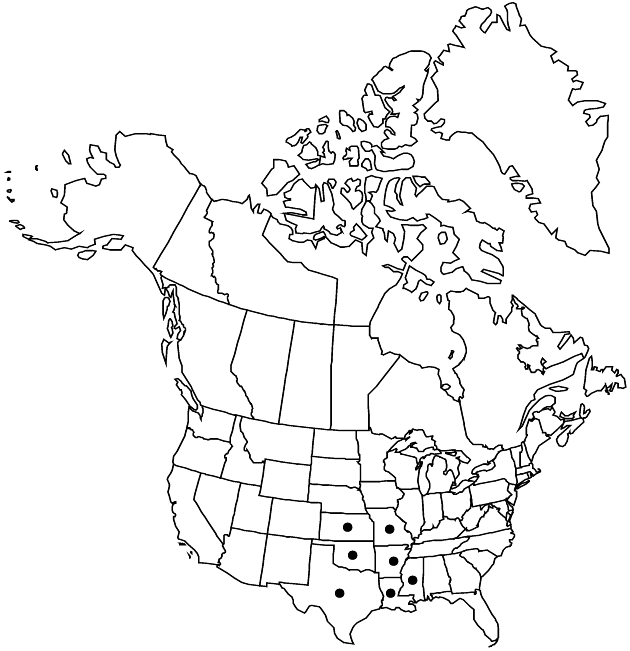Symphyotrichum drummondii var. texanum
Phytologia 77: 279. 1995.
Common names: Texas aster
Basionym: Aster texanus E. S. Burgess in J. K. Small, Fl. S.E. U.S., 1214, 1339. 1903
Synonyms: Aster drummondii var. texanus (E. S. Burgess) A. G. Jones Aster texanus var. parviceps Shinners Symphyotrichum drummondii var. parviceps (Shinners) G. L. Nesom Symphyotrichum texanum
Treatment appears in FNA Volume 20. Treatment on page 504.
Plants 30–80 cm. Stems ± densely hirsute, particularly distally. Leaves membranous, becoming thickish, brittle; basal and proximal winged-petiolate; proximal cauline blade bases cordate, becoming rounded-truncate distally. Heads in open, paniculiform arrays with very long, widely spreading branches. Peduncles 1–4 cm, densely, minutely bracteate. Involucres turbinate to hemispheric, 3.8–5.2 mm. Ray corollas bluish white. Cypselae strigillose. 2n = 32.
Phenology: Flowering Sep–Nov (seldom spring).
Habitat: Loamy soils or well-drained clays, bottomlands, open deciduous woods, oak-juniper woodlands
Elevation: 0–100+ m
Distribution

Ark., Kans., La., Miss., Mo., Okla., Tex., Mexico (Coahuila).
Discussion
Variety texanum is known mainly from the Ozarks, east-central Texas, and the Edwards Plateau; it is disjunct to Coahuila (G. L. Nesom 1993g).
Selected References
None.
Lower Taxa
None.